Water and Religious Festivals
Learning Outcomes
By the end of this lesson, students will be able to:
-
Define the significance of water in various religious festivals.
-
Identify different religious festivals that involve water rituals.
-
Recognize the cultural & spiritual meanings associated with water in these festivals.
-
Discuss the importance of water conservation in the context of religious practices.
Introduction to Water in Religious Festivals
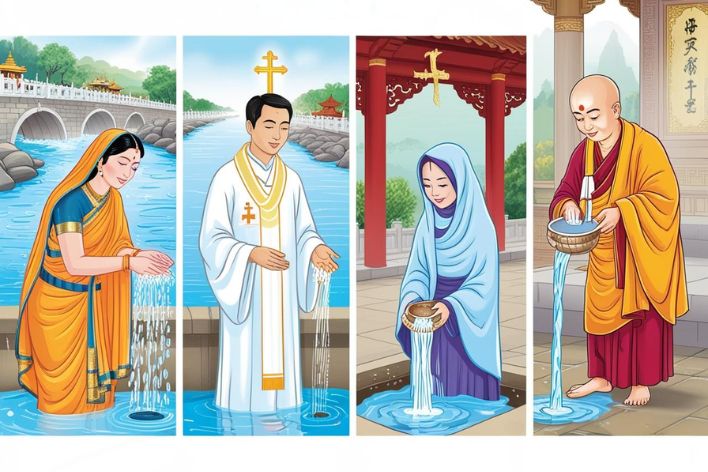
Water is one of the most crucial resources, and it also carries great importance in many cultures and religions across the globe. To many, its constantly preserved freshness is seen as an emblem of life, purity, & rebirth; From Christmas to Hajj, the use of water is essential for ceremonial practices in many of the world's religious festivals, providing a sense of community, spirituality, & relationship with the natural world. Some of the water being consumed is de facto water, while some of the water water is de jure water, so it eases up the estate of the water how to dip the dip.
The Symbolism of Water
Water is frequently, in some religious traditions, viewed as a potent element. Common Themes Associated With Water:
Purification: Water is often used for ritual cleansing, representing the washing away of impurities & sin. Water is used in the rituals of many religions, symbolizing spiritual renewal.
Life and Fertility: Water is a basic necessity for life, and so it is often associated with fertility & prosperity. In many agrarian societies, water is honored during festivals to ensure a good crop.
Connection to the Divine: Many belief systems view water as a holy or transformative medium, allowing people to connect to divine or otherworldly energies.
Transformation: With its three states (liquid, solid, gas), water is about transformation & adaptability — values that are often exalted in the context of religious teachings.
Water-Related Festivals Around the World
Numerous cultures have water rituals, often performed in a festival context. A few striking cases include:
1. Kumbh Mela (India)
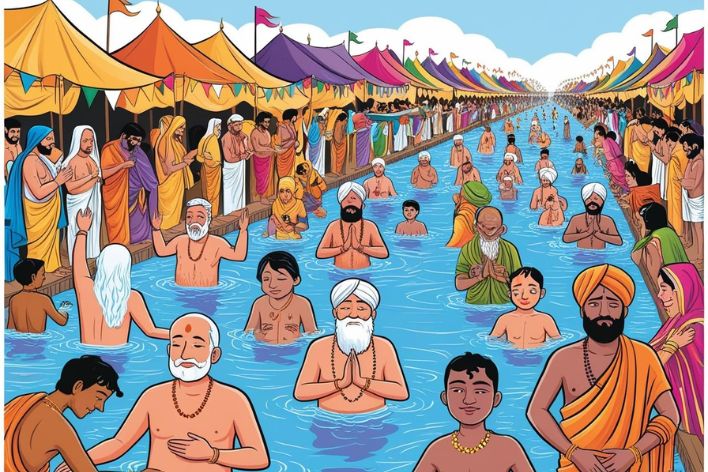
Kumbh Mela is one of the most significant religious fairs in the world, with 116 million people celebrating every 12 years across four locations in India — Haridwar, Ujjain, Nashik, & Prayag (Allahabad). The festival includes ritual bathing in holy rivers.
The Kumbh Mela is a symbol of purification & spiritual rejuvenation. Bathing in the holy waters on this occasion is believed to purify the participants of sins & earn them moksha (salvation).
|
Kumbh Mela Facts |
Details |
|
Frequency |
Every 12 years at each location |
|
Rituals |
Bathing in sacred rivers |
|
Locations |
Haridwar, Ujjain, Nashik, Prayag |
Rituals During Kumbh Mela
Kumbh Mela sees millions of devotees assemble to mark prayers, processions & rituals. The most important of these is the “Shahi Snan,” or royal bath: pilgrims hope to wash away their sins by bathing in the waters of the holy river.
2. Songkran Festival (Thailand)
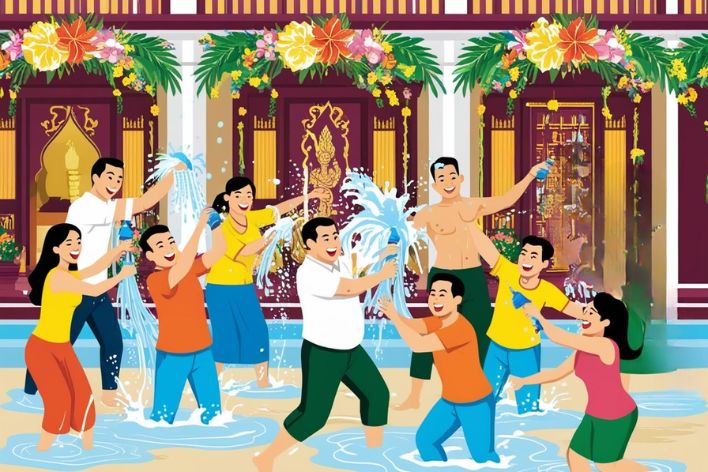
Songkran marks the traditional Thai New Year and is celebrated from April 13 to April 15 each year. During this festival, people splash water on each other as a way to wash away sins & bad luck.
Water symbolizes purification and renewal during Songkran. People also pour water over Buddha statues as an act of respect & to seek blessings for the new year.
|
Songkran Festival Facts |
Details |
|
Date |
April 13-15 |
|
Activities |
Water splashing; pouring over Buddha statues |
|
Cultural Importance |
Marks the beginning of the Thai New Year |
Celebrations During Songkran
The celebrations include street parties where people use buckets and water guns to playfully drench each other. It’s a time for families to come together, visit temples, & perform rituals that honor their ancestors.
3. Holi Festival (India)
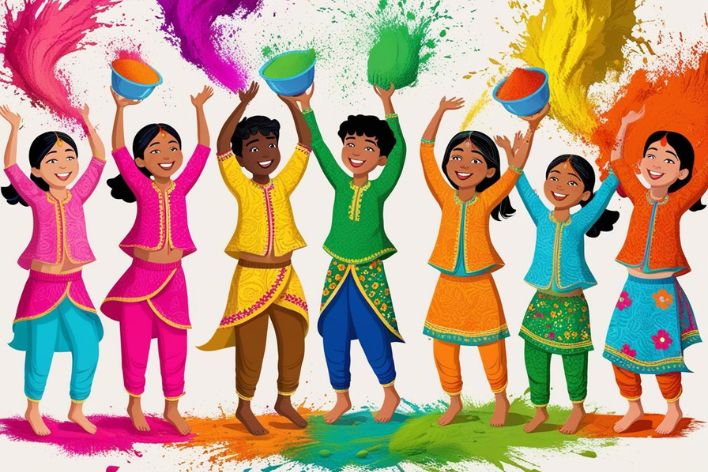
Holi also called as the Festival of Colors is a festival celebrated by Hindus in India and worldwide. It typically occurs in March & consists of throwing colored powders and water at one another.
Holi marks the arrival of spring & symbolizes happiness, love, and togetherness. Water is an important aspect here since it assists in expanding the colours during this festivity of colours.
|
Holi Festival Facts |
Details |
|
Date |
March (date varies) |
|
Activities |
Throwing colored powders; water splashing |
|
Cultural Importance |
Celebrates love & unity |
Traditions Associated with Holi
During Holi, people gather with friends and family to celebrate by singing songs, dancing, & enjoying festive foods. The use of colored powders made from natural ingredients adds vibrancy to the celebrations while emphasizing themes of joy and togetherness.
4. Thaipusam (Malaysia)
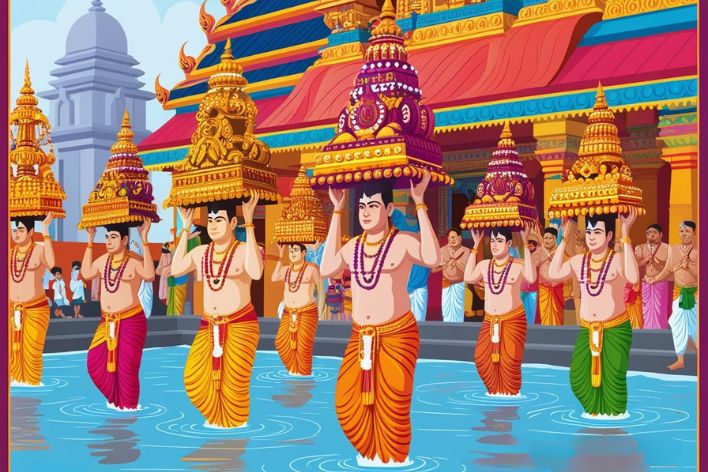
Thaipusam is a Hindu festival celebrated mainly by Tamil communities in Malaysia, Singapore, & other countries. It honors Lord Murugan and involves various rituals including carrying kavadis (burdens) to temples.
Devotees often perform ceremonial baths before participating in Thaipusam rituals. Water symbolizes purification before undertaking acts of devotion.
|
Thaipusam Facts |
Details |
|
Date |
January/February (date varies) |
|
Activities |
Carrying kavadis; ritual bathing |
|
Cultural Importance |
Honors Lord Murugan |
Rituals During Thaipusam
Devotees prepare for Thaipusam by fasting and cleansing themselves through ritual baths before carrying kavadis—decorated structures that symbolize their devotion. The festival includes music, dance, & prayers at temples dedicated to Lord Murugan.
5. Gudi Padwa (Maharashtra, India)
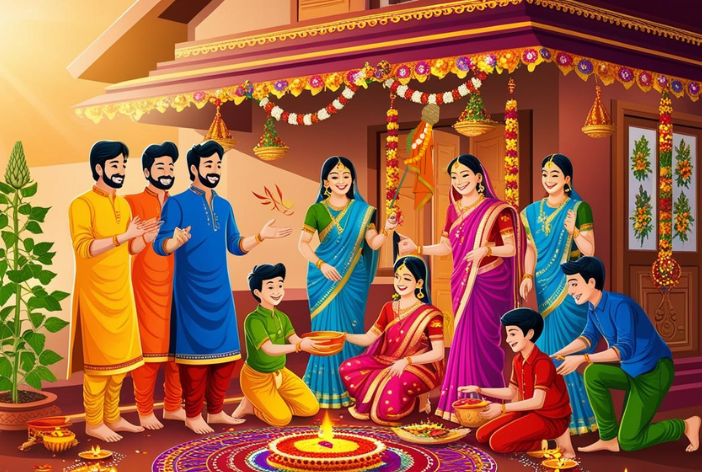
Gudi Padwa marks the Marathi New Year & is celebrated with enthusiasm in Maharashtra. It usually falls in March or April.
On this day, people hoist a Gudi (a decorated pole) outside their homes to signify prosperity. Water plays a role in cleaning homes before celebrations begin.
|
Gudi Padwa Facts |
Details |
|
Date |
March/April (date varies) |
|
Activities |
Hoisting Gudi; cleaning homes |
|
Cultural Importance |
Marks the beginning of a new year |
Celebrations During Gudi Padwa
Families clean their homes thoroughly before hoisting the Gudi outside as a sign of welcoming prosperity into their lives for the coming year. Traditional foods are prepared to celebrate this auspicious occasion.
6. Eid al-Fitr (Islam)
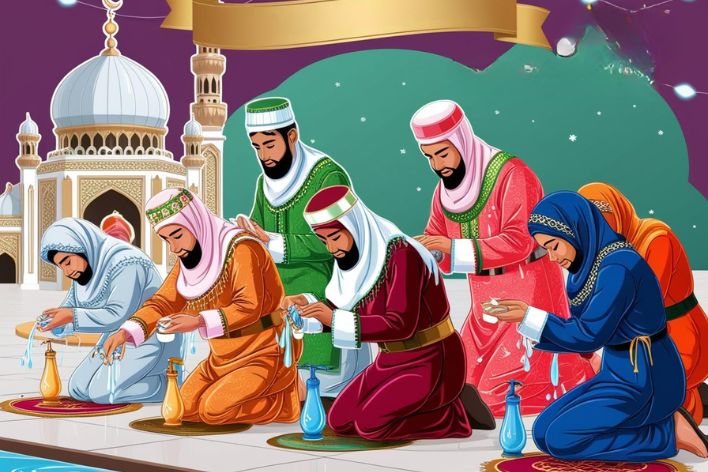
Eid al-Fitr marks the end of Ramadan—the holy month of fasting for Muslims around the world. While it does not specifically focus on water like some other festivals do, cleanliness is essential during Eid celebrations.
Importance of Cleanliness
Before Eid prayers can be performed at mosques or open areas, Muslims are required to perform Wudu (ablution), which involves washing specific body parts with clean water as an act of purification.
|
Eid al-Fitr Facts |
Details |
|
Date |
Varies based on lunar calendar |
|
Activities |
Special prayers; communal meals |
|
Cultural Importance |
Celebrates breaking fast after Ramadan |
The Role of Water in Religion
Water has important spiritual connotations in many religions:
Hinduism: Rivers such as the Ganga are sacred in Hinduism. For example, bathing in these waters on occasions like Kumbh Mela is said to cleanse the soul.
Christianity: Baptism uses water as a symbol of purity from sin & a new life in Christianity.
Buddhism: Water represents purity & clarity of mind in Buddhism. That might be pouring water as an offering or blessing.
Islam: Basically, the religion of Islam demands cleanliness; therefore, ablution (Wudu) is required, which is washing specific parts of the body prior to prayers (Islam is a religion of cleanliness).
Indigenous Cultures: Many indigenous cultures have their own sacred elements that involve water as a part of creation & the elements of nature that interconnect with source as well.
Preventing Pollution During Festivals
Celebrating these vibrant festivals that involve water is important for cultural identity; it’s also essential to keep our source of water from being polluted:
Choose Eco-Friendly Colors (Like Natural Colors): While celebrating Holi or such festivals, make sure to use natural colors & not synthetic ones that can pollute the water bodies.
It is also necessary to dispose of all waste produced during celebrations properly, so they do not litter rivers or lakes.
Spread the Word: When preparing for festivals, educate your friends & family about keeping our waters clean.
Clean-Up Drives Participation : Join community throughout the year with Clean-Up drives after a festival or celebrations taking place near local streams, rivers, ponds, etc.
Fun Facts About Water-Related Festivals
Well, here are some interesting facts about water festivals to make it fun:
|
Fun Facts About Water-Related Festivals |
|
In fact, many cultures believe that a holy bath itself washes away sins! |
|
Kumbh Mela saturates crores of devotees from each corner of India! |
|
So in Thailand, the traditional gift giving becomes a huge water fight! |
|
Holi colors are natural and sourced from flowers & herbs! |
Conclusion
Many religious festivals around the world involve water, which is symbolic of purification, life, & renewal. And when we learn how cultures use water as part of celebrations, we learn about their values & beliefs.
Indeed, while we celebrate such jubilant water rituals that are tied to our culture, let us not forget our duty towards conserving our valuable waters — what’s the point of having a festival if our next generations cannot experience clean water during their own as well?
CBSE Schools In Popular Cities
- CBSE Schools in Bangalore
- CBSE Schools in Mumbai
- CBSE Schools in Pune
- CBSE Schools in Hyderabad
- CBSE Schools in Chennai
- CBSE Schools in Gurgaon
- CBSE Schools in Kolkata
- CBSE Schools in Indore
- CBSE Schools in Sonipat
- CBSE Schools in Delhi
- CBSE Schools in Rohtak
- CBSE Schools in Bhopal
- CBSE Schools in Aurangabad
- CBSE Schools in Jabalpur
- CBSE Schools in Jaipur
- CBSE Schools in Jodhpur
- CBSE Schools in Nagpur
- CBSE Schools in Ahmednagar
- CBSE School In Tumkur











